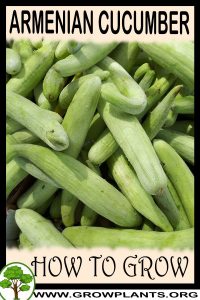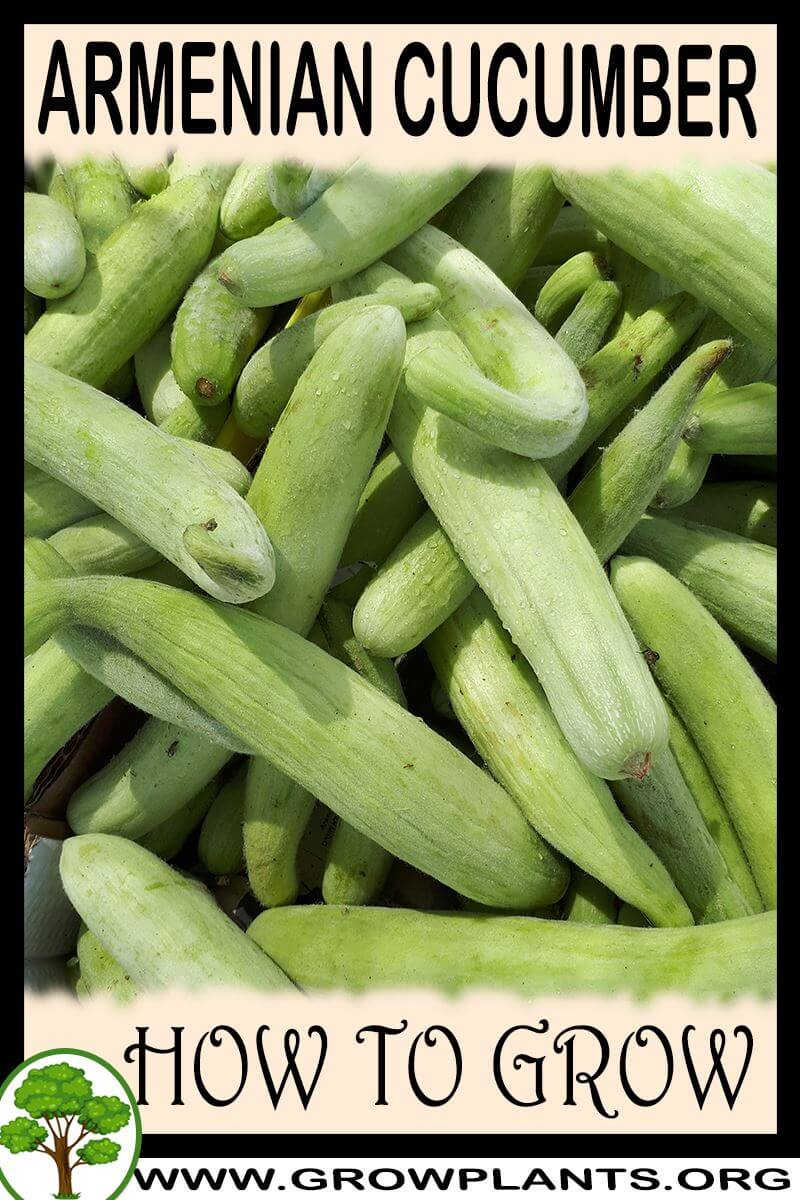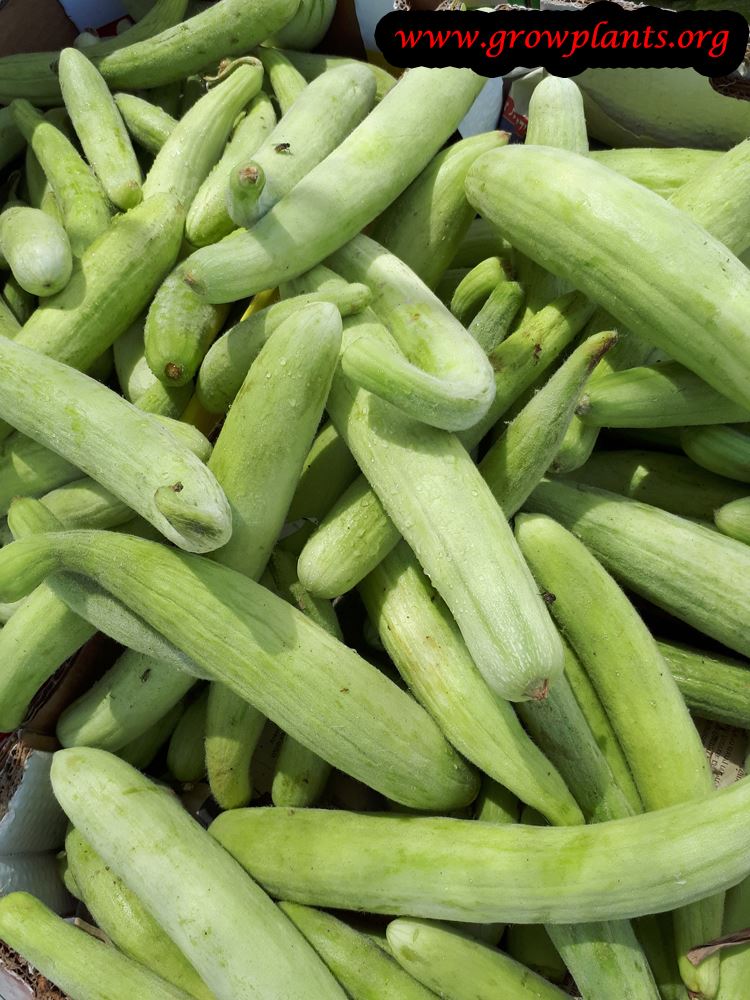
Armenian cucumber grow and care – – herbaceous semi vine or creeping vine of the genus Cucumis also known as Snake melon, Armenian cucumber is an annual plant and grown for the edible fruits, can grow in mediterranean, subtropical, temperate or tropic climate and growing in hardiness zone 4+.
Leaves color green in heart shape and wavy in the margin.
Flower color yellow with five lobs, female contain semi fruits, and male flower are smaller.
Armenian cucumber edible vegetables
Fruit usually picked before it’s fully grown the rind is green yellow, the structure rough stripes or burpless, inside the fruit is light green and hollow.
Armenian cucumber for sale – Seeds or Plants to Buy
How to grow Armenian cucumber growing tips and care:
Mulch keep the moist of the soil and also protect the fruits, watering on the ground and not watering on the leaves or the fruits, the vine species need trellising, slightly acid soil, rich soil
What is the best way to start growing?
Seedling / Seed (explanation bellow)
Is it necessary to graft or use vegetative reproduction?
No, possible to graft for better base that will be resistant for virus
Difficulties or problems when growing:
Attacked easily, when the plant attacked in the base if not treatment well it will die
Planting season:
Spring to summer
Pests and diseases:
Powdery mildew, aphids, Armenian cucumber Beetles
Pruning season:
All the season
How to prune:
Infected leaves needed to take out, also try to clean them
Size of the plant:
3-5 m, 10-15 feet
Growth speed in optimal condition:
Fast growing
Water requirement:
Small amount of water to average amount of water
Light conditions in optimal condition for growing:
Full Sun
Is it possible to grow indoor as houseplant?
No
Growing is also possible in a planter /flowerpot / containers:
Yes, planting in containers need to be at least 10-20L (2.5-5 gallons), well-drained soil, the plant not react well to overwater, need to make enough holes in the container for good drainage also choosing soil for container important and need to be soil well ventilated, can be potting mix or peat soil with perlite, when use bottom for the pot need that it will dry in the same day.
Blooming information
Bloom season:
Late spring to summer
General information about the flower
Yellow flower with five lobs, female contain semi fruits, and male flower are smaller
Thinning the bloom:
Sometimes happened because disease or
Pollination is done by:
Bees and more pollinators
Edible Fruit
Fruit harvest season:
Summer to autumn
Fruits pests or diseases:
Powdery mildew
What can be done with big quantities of Armenian cucumber fruits?
Eaten raw, salad, raw cooked
Work requirements on the fruit:
Sometimes to space it from the ground
How long does it take to bear fruit?
60-100 days
How to grow Armenian cucumber growing from seeds
Sowing requirement:
Easy to sow no special treatment, after 3-5 leaves reduce the moist (even before)
Saving seeds until sowing:
Room temperature, dry place
Sowing season:
Spring (but in warm weather possible in the summer) and in cold climate start in the winter indoor
Planting spacing:
1*2m (3-6 feet) when trellising
Depth of Sowing:
1-2cm (0.5-1 inch)
Conditions for seeds germinate:
Moist soil, full sun
Watering requires for Seeds:
Average amount of water
Germination time:
7-20 days
Condition of seedling:
Warm weather, big amount of water, full sun, place to trellising
Scientific name:
Cucumis melo var. flexuosus,
Categories
| Blooming Seasons |
|
|---|---|
| Edible Parts |
|
| Culinary uses |
|
| Flower colors |
|
| Climate |
|
| Harvest Season |
|
| Ornamental parts |
|
| Plant growing speed |
|
| Plant life-form |
|
| Plant Uses |
|
| Planting Season |
|
| Plants sun exposure |
|
| Watering plants |
|
| Hardiness zone |
|



